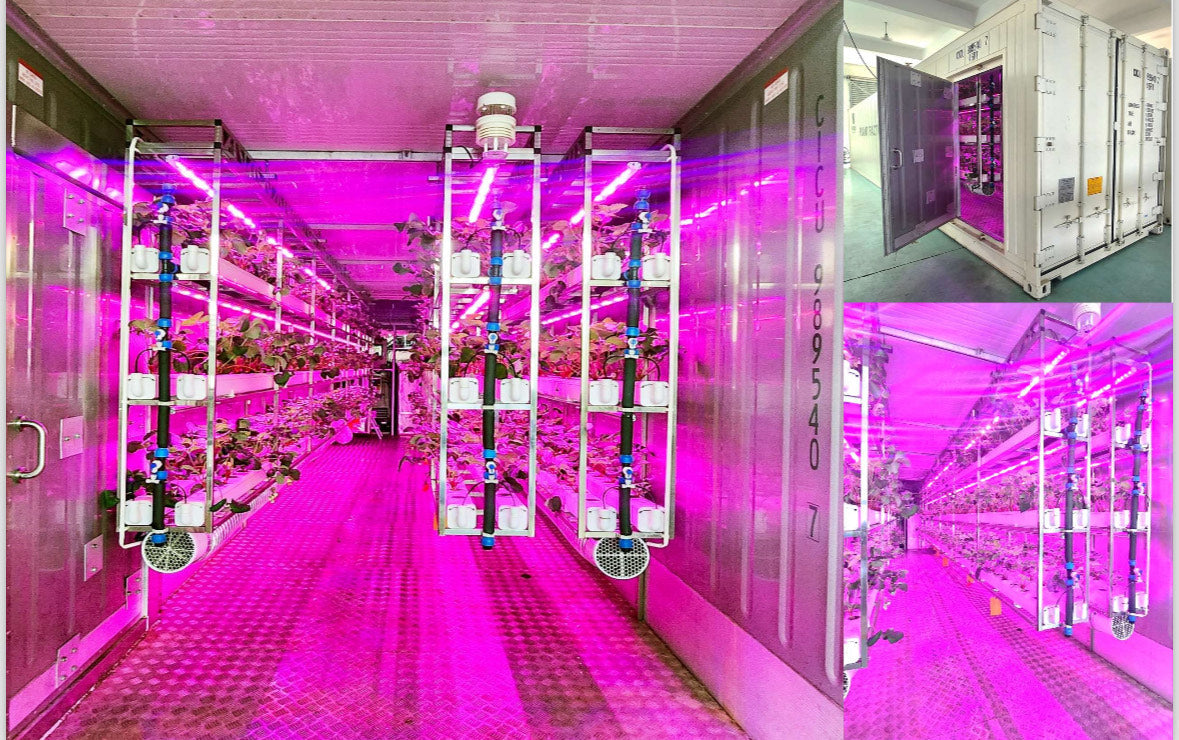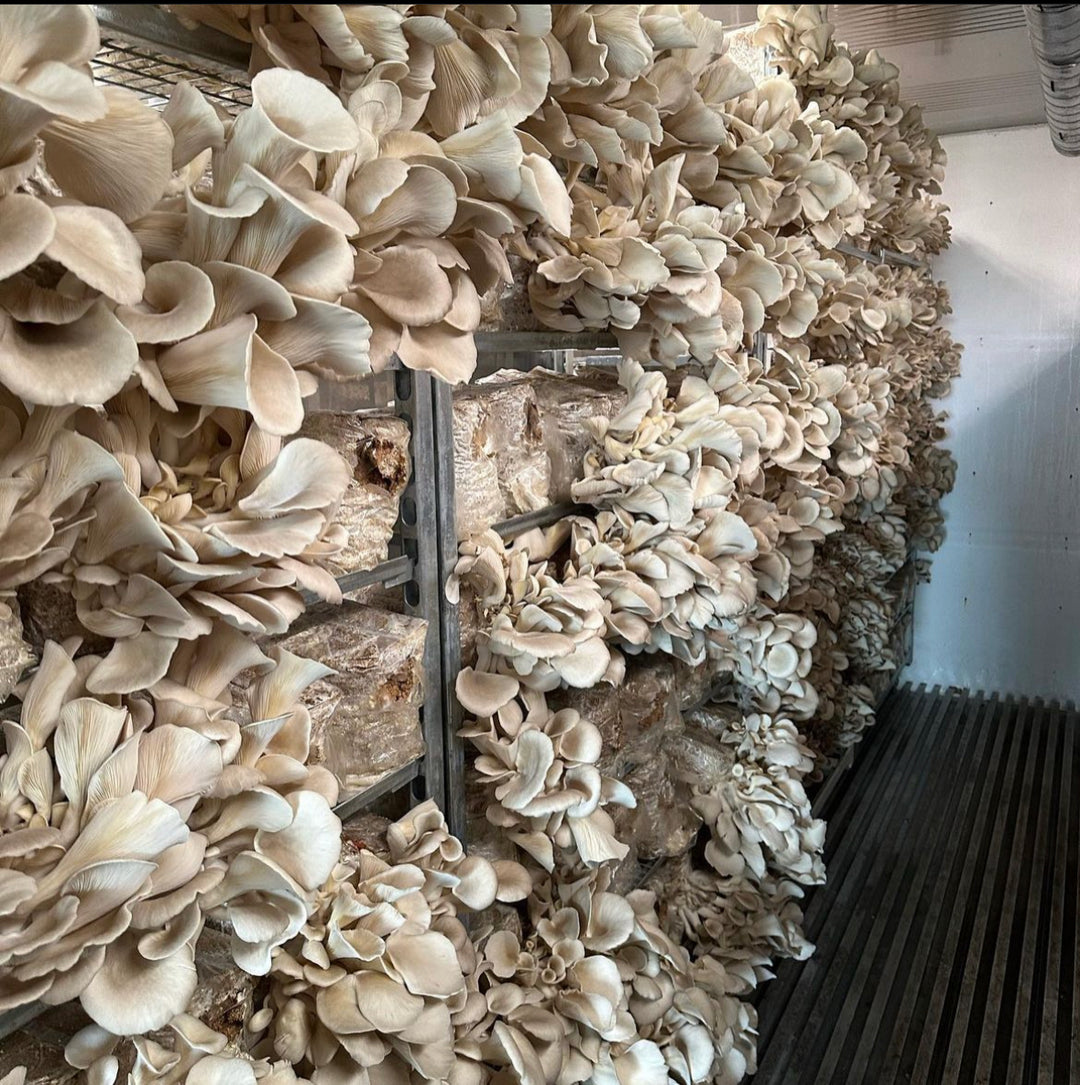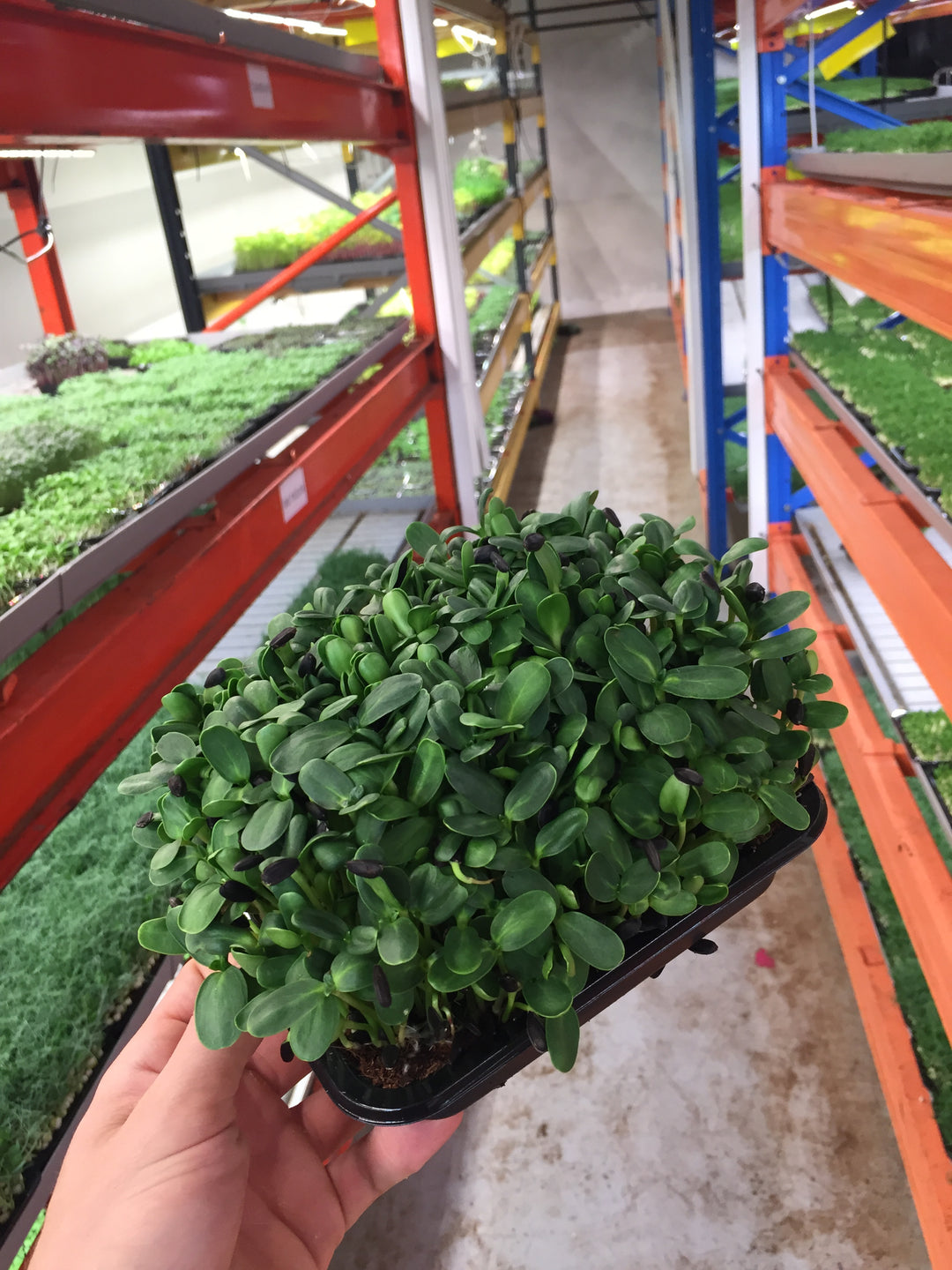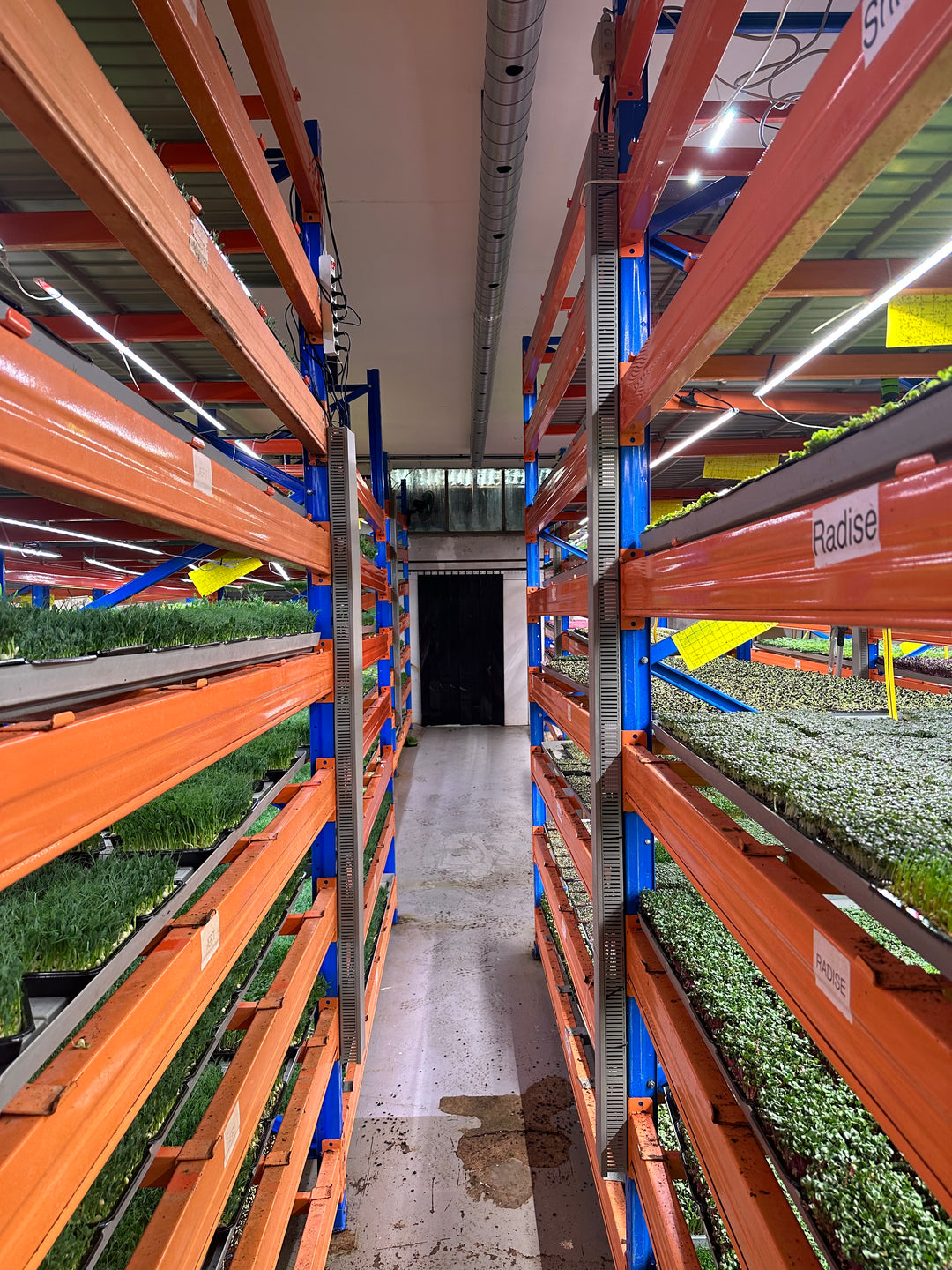Advantages of Growing Medicinal Plants in a Vertical Farm

The growing interest in holistic health, herbal remedies, and natural healing has led to an increased demand for medicinal plants. These plants, which are used in a wide range of wellness products, teas, oils, tinctures, and supplements, have been valued for centuries for their therapeutic properties. However, growing medicinal plants traditionally often comes with challenges, such as space constraints, environmental unpredictability, and the need for specific growing conditions.
Vertical farming, with its efficient use of space and precise control over environmental variables, presents a sustainable and innovative solution for cultivating medicinal plants. In this blog post, we’ll explore the advantages of growing medicinal plants in a vertical farm and why this method is becoming increasingly popular in both urban and commercial farming sectors.
1. Maximizing Space Efficiency
One of the primary advantages of vertical farming is its ability to make the most out of limited space. In traditional farming, growing medicinal plants requires significant land area, especially when you consider the need for specific growing conditions for each plant species. Some medicinal plants, like lavender, ginseng, or echinacea, need certain amounts of sunlight, temperature regulation, and soil conditions that can be difficult to achieve on a large scale in open fields.
Vertical farming solves this problem by stacking multiple layers of crops vertically, often using towers, racks, or shelves. This allows medicinal plants to be grown in a much smaller footprint than traditional farming. For example, a single vertical farming system could fit dozens of plant species, all with unique growing requirements, in the same space that would normally only be able to support a fraction of the plants outdoors. This maximized space usage is particularly valuable in urban areas where land is limited and expensive.
2. Optimal Control Over Growing Conditions
Medicinal plants often have very specific growing requirements, such as temperature, humidity, light exposure, and nutrient levels. In traditional farming, these factors can vary depending on the weather, soil quality, and time of year. This makes it difficult to ensure consistent plant quality and yield, especially when you’re working with sensitive or slow-growing species.
Vertical farms, on the other hand, are typically grown in controlled indoor environments or greenhouses. This allows farmers to maintain optimal conditions for each plant species throughout the year. Temperature, humidity, light intensity, and even CO2 levels can be precisely regulated, ensuring that the plants grow at their best, regardless of external weather conditions. With the ability to tailor these conditions for each plant type, vertical farming can result in healthier, more potent medicinal plants.
For example, plants like *ginseng*, which requires long, cool growing seasons, or *echinacea*, which thrives in dry, warm climates, can both be cultivated in the same vertical farm environment, with conditions adjusted for each. The level of control over the growing environment ensures that medicinal plants reach their full therapeutic potential, with high-quality yields year-round.
3. Year-Round Production
Unlike outdoor farming, which is subject to seasonal limitations, vertical farming allows for year-round production of medicinal plants. Vertical farms are typically housed indoors or in greenhouses, meaning they are shielded from adverse weather conditions such as frost, drought, or storms. This consistency is essential for growing plants that need a stable environment to thrive.
For example, *St. John’s Wort*, used for mood enhancement and anxiety relief, takes a full growing season to mature, while other plants, like *chamomile* or *peppermint*, have relatively short growth cycles. In a vertical farm, these plants can be grown continuously, with harvests occurring throughout the year, providing a steady supply of fresh, potent medicinal plants. This ensures that there is no interruption in production, reducing the reliance on seasonal cycles and increasing overall yield.
Moreover, year-round production helps mitigate risks associated with traditional farming, such as crop failure due to unpredictable weather, pests, or diseases. It also enables farmers to optimize growing conditions and achieve multiple harvests per year, ensuring a continuous supply of fresh medicinal plants for both consumers and the pharmaceutical industry.
4. Water Efficiency and Sustainability
Water scarcity is a significant concern in traditional agriculture, especially in areas where irrigation is needed. Medicinal plants, like many other crops, are typically grown with regular watering. In vertical farming, however, the use of hydroponics or aeroponics systems allows plants to be grown with minimal water waste. In hydroponic systems, plants grow in a nutrient-rich water solution, and the water is recirculated, reducing the amount of water needed for growth.
This is particularly advantageous for water-intensive plants like *lavender* or *aloe vera*, which are often grown in arid regions. Vertical farming can reduce water usage by up to 90% compared to traditional soil-based agriculture, making it a more sustainable way to grow medicinal plants. By using water more efficiently and reducing waste, vertical farming helps conserve this vital resource, especially in areas facing droughts or water shortages.
Additionally, because vertical farms often use controlled systems, there is less runoff or excess waste water, preventing pollution of nearby ecosystems, which can be a problem in conventional farming.
5. Reduced Use of Pesticides and Herbicides
Many medicinal plants are highly sensitive to chemicals like pesticides and herbicides, which can affect the plant’s natural properties and reduce its therapeutic value. In conventional farming, the need to control pests and diseases often leads to the use of chemicals, which can leave harmful residues on the plants and pose risks to both human health and the environment.
Vertical farms, especially those operating in controlled indoor environments, can minimize the need for pesticides and herbicides. Since these farms are typically enclosed and use integrated pest management (IPM) techniques, such as introducing beneficial insects or using non-chemical methods, the reliance on chemical interventions can be greatly reduced or eliminated. This is particularly important when growing medicinal plants, which are intended for use in health products and must meet strict quality standards.
By avoiding pesticides and herbicides, vertical farms produce cleaner, safer medicinal plants, appealing to consumers who are increasingly concerned about the presence of chemicals in their health products.
6. Local and Sustainable Production
One of the most important benefits of vertical farming is the ability to grow medicinal plants locally, close to urban centers where the demand for such products is high. Traditional farming often involves transporting medicinal plants over long distances, leading to high transportation costs, carbon emissions, and loss of freshness. By growing medicinal plants in vertical farms situated in or near cities, producers can reduce the carbon footprint associated with transportation, providing fresh, locally grown products to consumers more quickly.
This also enhances the resilience of the local food system. Vertical farms are less susceptible to the disruptions that affect conventional farming, such as extreme weather events, crop diseases, or trade disruptions. By growing medicinal plants locally, vertical farming can contribute to a more secure and sustainable supply of herbs, reducing dependency on imported plants and promoting local economies.
7. Higher Yield and Quality
Vertical farming systems can significantly increase yields compared to traditional farming methods. The use of advanced growing techniques, such as hydroponics, aeroponics, and controlled-environment agriculture (CEA), allows plants to grow faster and healthier. Since vertical farming eliminates the need for large amounts of land, farmers can focus on producing high-quality medicinal plants in a controlled environment.
For instance, plants like *turmeric* and *ginger*, which require specific soil conditions, can be grown in hydroponic systems in a vertical farm, providing high-quality roots with more consistent potency and purity. The ability to control nutrient levels, light cycles, and temperature ensures that each
plant receives optimal growing conditions, resulting in stronger, more resilient plants that yield a higher concentration of active compounds like alkaloids, flavonoids, and terpenes — essential for the therapeutic efficacy of many medicinal plants.
8. Reduced Food Waste and Spoilage
Medicinal plants, especially those used in fresh form, are prone to spoilage and degradation during transportation and storage. In traditional farming, many medicinal plants are harvested and transported long distances, which can lead to loss of potency and freshness, not to mention waste due to unsold or expired stock.
Vertical farms, located closer to end consumers, can harvest medicinal plants at their peak potency and deliver them to market quickly, reducing spoilage and waste. With faster time-to-market, the plants are fresher when they reach consumers, whether they are being used in herbal supplements, teas, or topical treatments. This reduces the overall waste associated with the production and distribution of medicinal plants.
Conclusion
Growing medicinal plants in a vertical farm offers a wide range of benefits, from space efficiency and water conservation to improved control over growing conditions and reduced environmental impact. By providing an ideal environment for cultivating these plants year-round, vertical farming can help meet the increasing demand for high-quality medicinal plants in a sustainable and resource-efficient way.
Whether for use in wellness products, natural remedies, or herbal teas, vertical farming can ensure that medicinal plants are grown safely, sustainably, and with the highest possible quality. This innovative farming approach offers an exciting solution for both consumers seeking natural health products and farmers looking to optimize production while minimizing environmental impact. As the world increasingly turns to nature for wellness solutions, vertical farming is poised to play a significant role in the future of medicinal plant cultivation.


